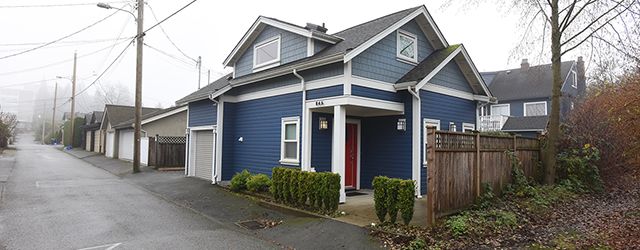There is more demand than ever for affordable housing in Canada. According to the Canada Mortgage and Housing Corporation, approximately 22 million affordable units need to be built by 2030.
Developers and builders are constantly looking for ways to innovate and improve affordable housing, primarily to keep costs down. Among those strategies is requiring more “in-fill homes” – or homes that fit in existing areas without changing the neighborhood too much.
So how do builders keep costs low while keeping the neighborhood similar? The answer may be laneway homes.
Laneway homes are independent residential units on a homeowner’s lot, which not only supports increased numbers of affordable housing options but can act as a source of rental income — for the homeowner.
As good as it sounds, current restrictions in the National Building Code (NBC) can limit municipalities’ authority to allow construction of laneway homes. Since a laneway home is designed to be an addition to an existing structure, there are rules about the distance it must be from the edge of the lot, and distance from firefighting access. There are also requirements for certain percentage of window openings and eaves protection that would put restrictions on any new build.
The solution may be overhead, however.
The NBC permits that if the building department, planners, and fire service agree, home fire sprinklers can be used to offset these restrictions. In Toronto, there are options to develop a laneway home with a path of travel including:
● A maximum of 45 metres in length measured from the street to
the entry of the laneway house
● A maximum of 90 metres in length from the street to the laneway
house if there is:
○ an automatic sprinkler, exterior strobe light and smoke alarm
○ or increased fire protection materials and building methods
plus exterior strobe light, and smoke alarms.
In Vancouver, a bylaw for all new residential properties requiring sprinklers to be installed has been in place since the 1990s; the sprinklers must meet NFPA 13R. Additionally, Vancouver permits longer travel distances – up to 45 metres – for firefighters if the property has sprinklers installed.
As a result, the number of carriage homes – similar to laneway homes – approved in the city skyrocketed from 19 in 2009 to 348 in 2013. There are currently approximately 5,000 laneway and carriage homes in Vancouver.

